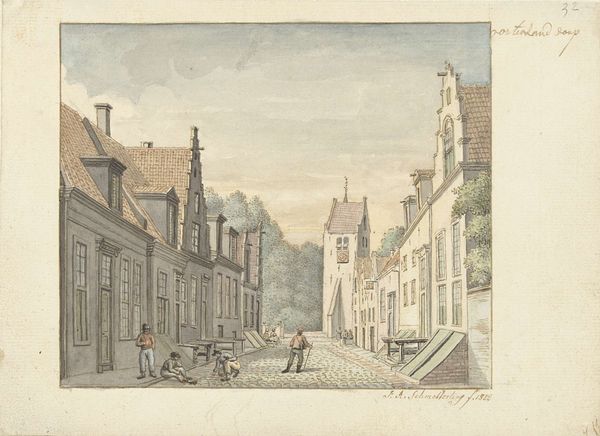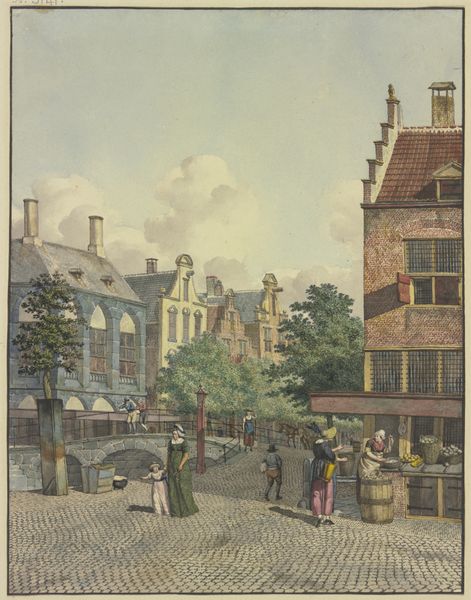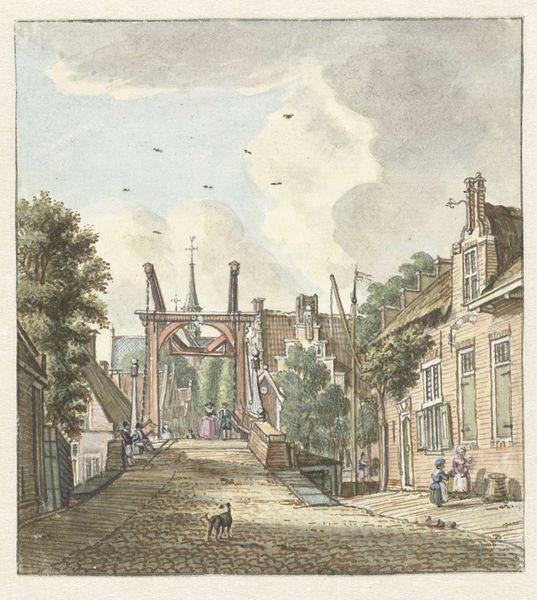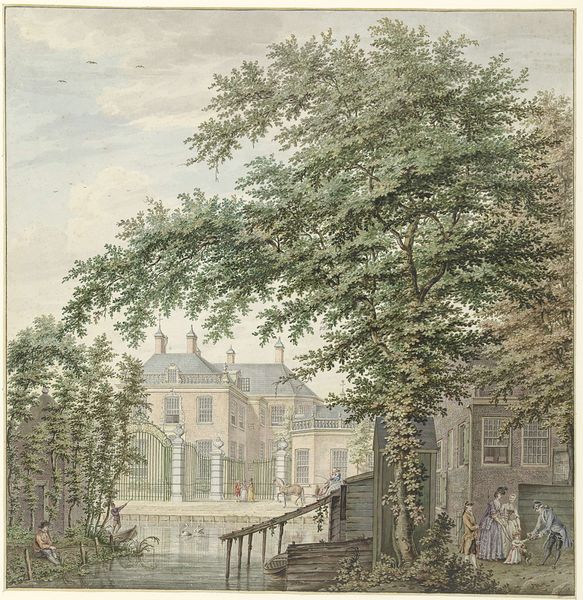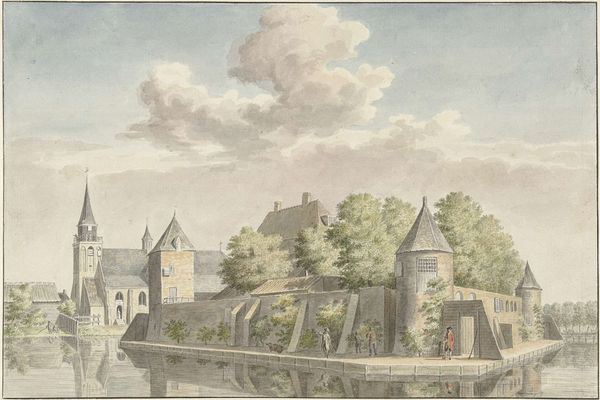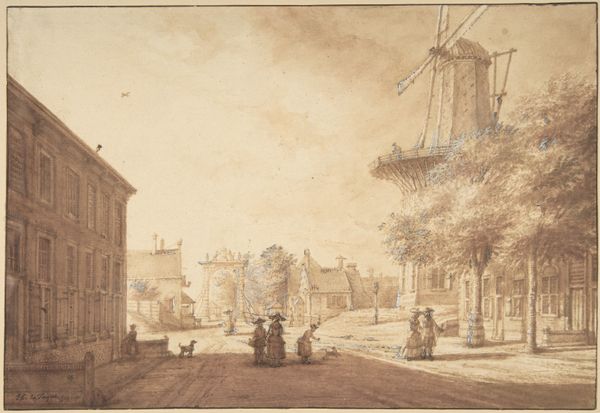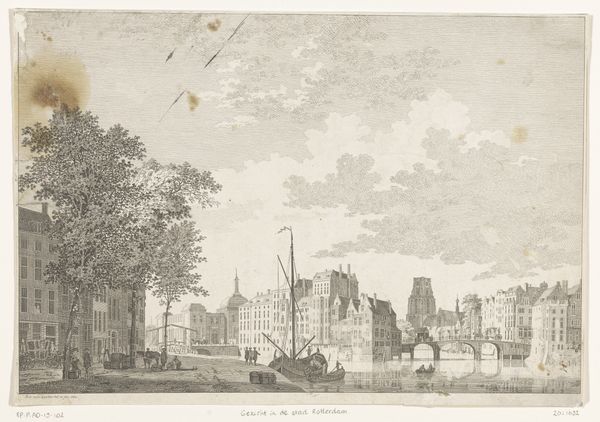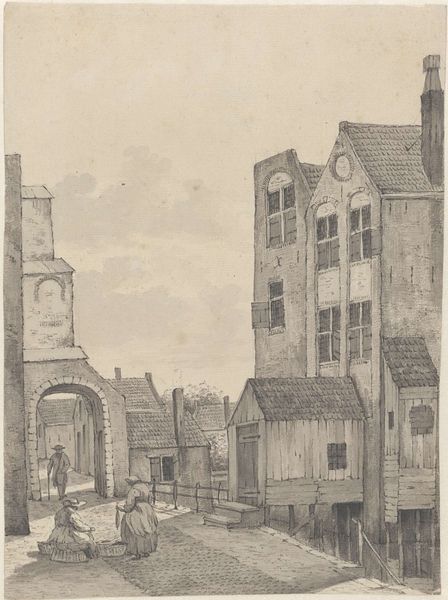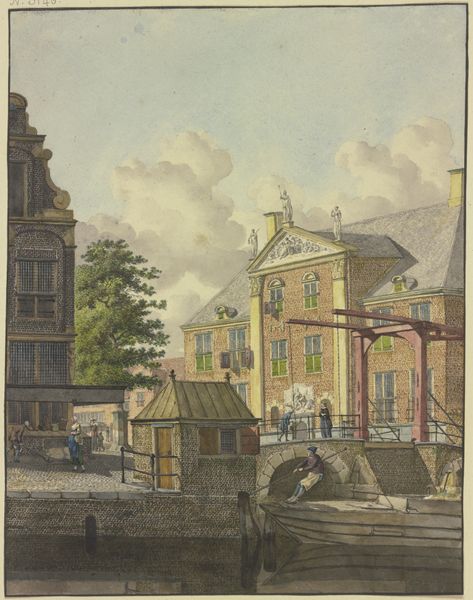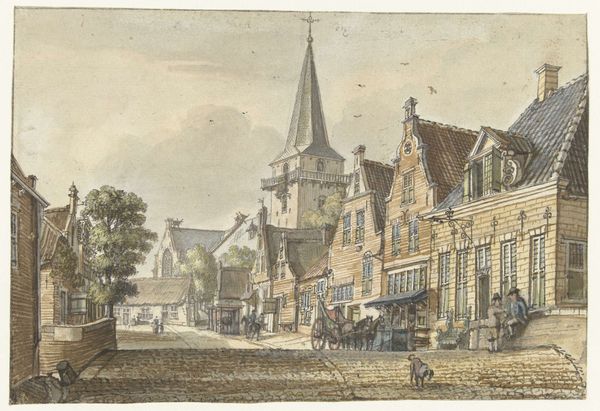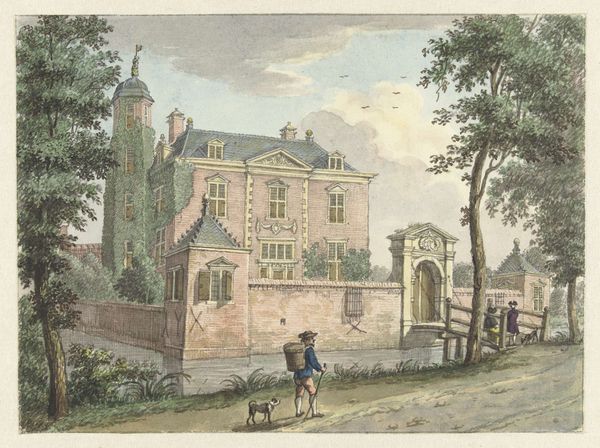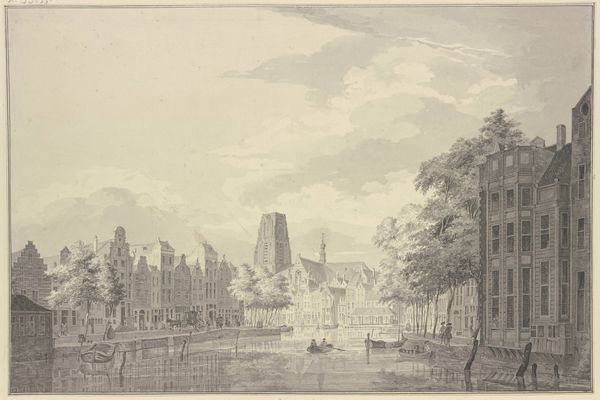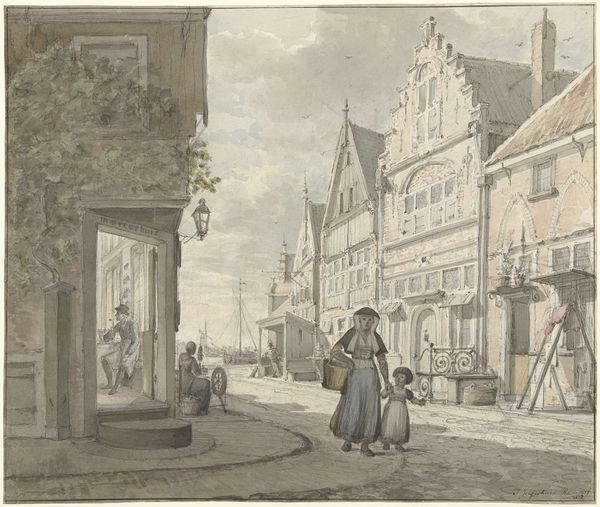
Dimensions: height 238 mm, width 290 mm
Copyright: Rijks Museum: Open Domain
Curator: Let’s consider "Gezicht op een stadsgracht," a cityscape rendered in watercolor around 1801 by Reinier Vinkeles. What are your initial thoughts? Editor: The quiet stillness strikes me immediately. The muted palette emphasizes the materiality of brick and stone; everything seems fixed in place, even the figures on the steps appear heavy, grounded. Curator: Indeed, this sense of stillness can be seen as reflective of the social climate of the time. In the late 18th century, the Dutch Republic was undergoing significant political and economic upheaval, a period defined by societal anxiety and transformation, which would certainly have impacted art production. Editor: It’s interesting that you say that because the scene, with its details and muted light, reads to me like an almost documentarian capture, highlighting the material wealth invested in Dutch infrastructure and architecture. Consider the cobblestone, brickwork, and sculpted figures. It is very labor intensive. Curator: I agree. And, on a deeper level, it speaks to notions of national identity. In visualizing the canal and architectural setting so painstakingly, Vinkeles captures and almost seems to claim Dutch cultural identity. This perspective is valuable when contextualizing colonial implications. Editor: Certainly. The detail applied to these civic structures compared to the ordinary folk is telling, it emphasizes a distinction between labor and power. I am also wondering what materials the artist could have afforded at the time? Pigments, paper. What socio-economic bracket could that afford access into? Curator: It's hard to ignore the baroque influence in this landscape. When we consider the way architecture shapes societal dynamics, the positioning of class differences within Vinkeles' artistic commentary is pretty intriguing. Editor: For me, paying attention to the labor embedded in this artwork’s creation emphasizes the privilege to create such a scene. The ability to manipulate the materials, to have access and time - it adds layers. Curator: So, by interweaving discussions of class, labor, material access and the construction of Dutch identity, we begin to engage a more complex dialogue around Vinkeles' “View of a City Canal”. Editor: Precisely, and focusing on production emphasizes the historical implications of what went into making art, who had the means, and how materials can further inform our understanding of artworks such as this one.
Comments
No comments
Be the first to comment and join the conversation on the ultimate creative platform.
